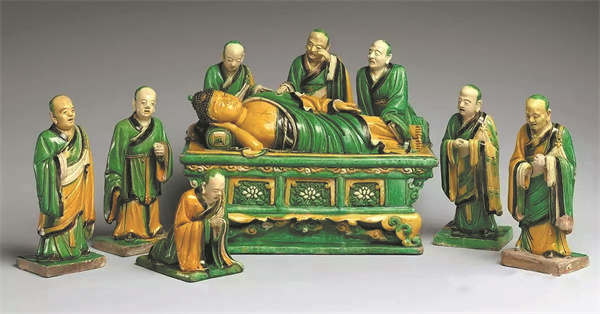

"The technique follows those employed by the Qiao family," Cui says, adding that a simple sculpture requires more than 10 days work and goes through over 20 steps, such as molding and two firings — one for the clay and the other for the application of the glaze.
As a traditional building material used throughout the history of traditional Chinese architecture, glazed tile is molded from clay and fired. The colors of the glaze are yellow, green, black and blue. Because the glazed surface is smooth and does not absorb water, it is a good way of protecting wooden buildings from the weather.
Although the skill is widely practiced today, Cui knows how close the craft came to disappearing on the nation's march to progress.
Formerly running a family business, the Qiao craftsmen carefully guarded the technical skills and production methods, which were passed down from generation to generation among male family members. The tradition was broken in 1955 when a State-owned ceramic factory was established in Yangcheng, hiring Qiao Chengxian as technician. Qiao taught the craft to people outside his family, which included Cui.
During the "cultural revolution" (1966-76), like many folk arts that were regarded as old and outdated, the craft was nearly abandoned. In 1981, the local cultural center invited Cui to revive the glazing technique.
Building a 4-cubic-meter kiln in Houzeyao, a village in Yangcheng, Cui recruited Cui Ruxia and Ma Ximei to help him bring the forgotten craft back to life.